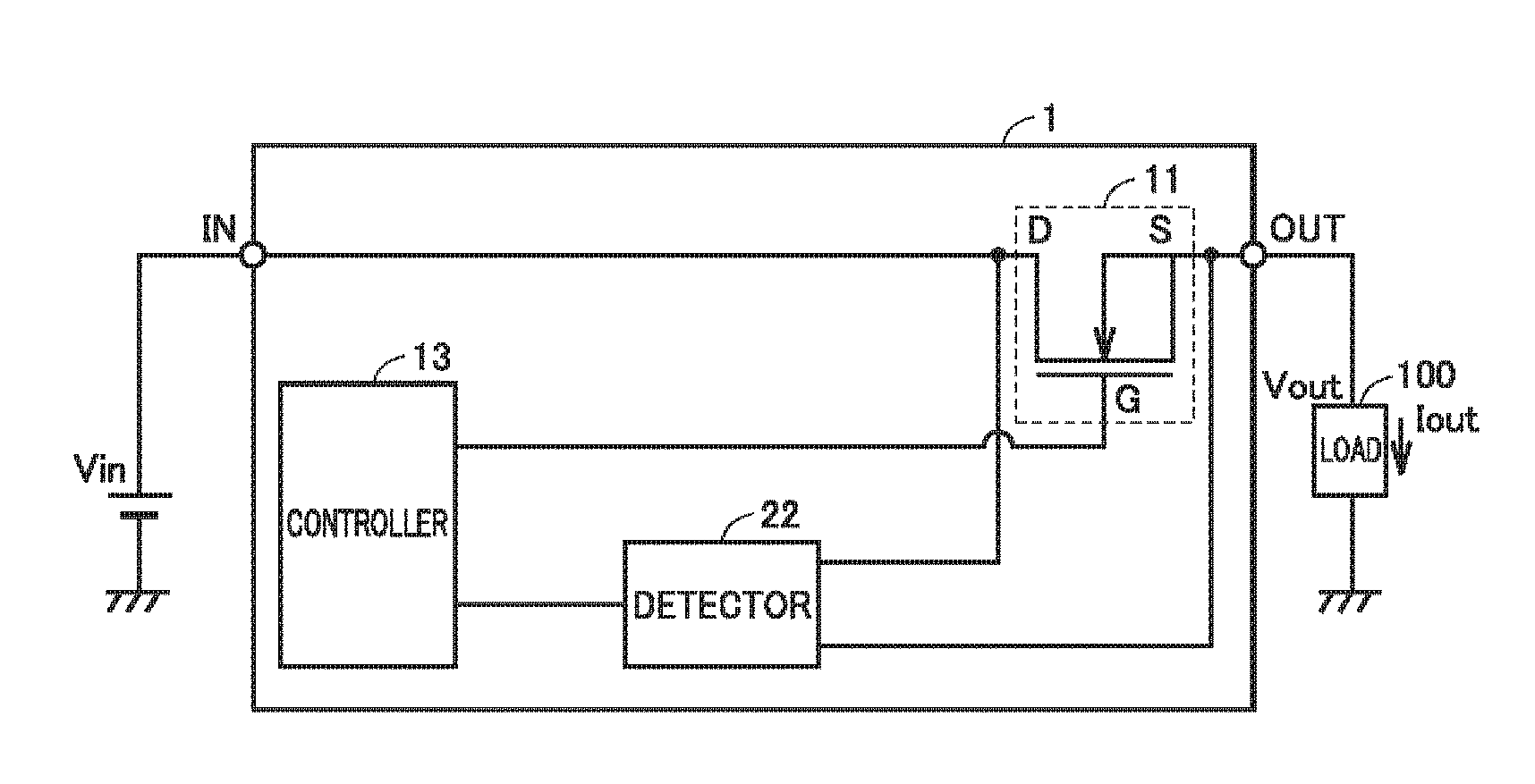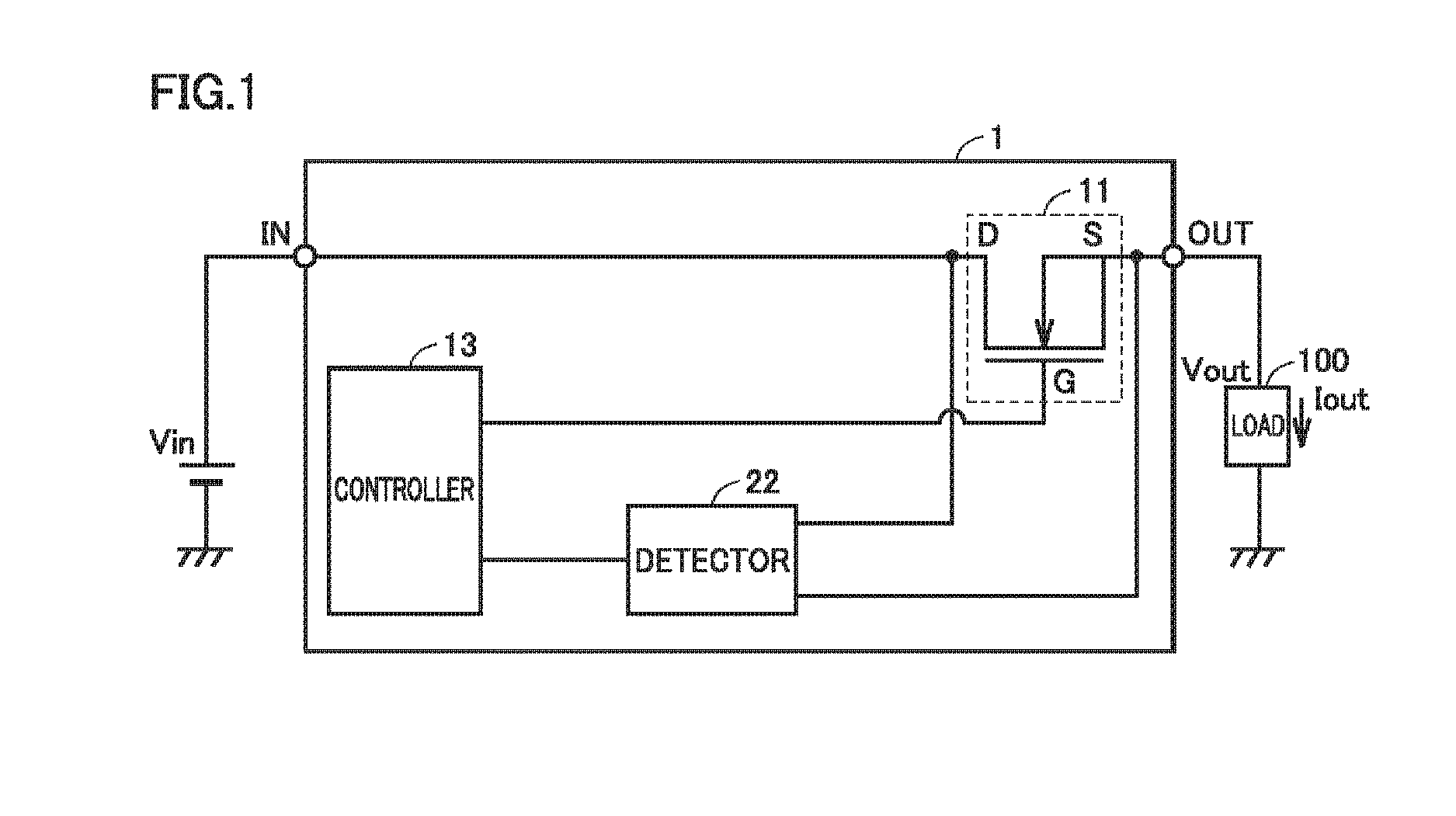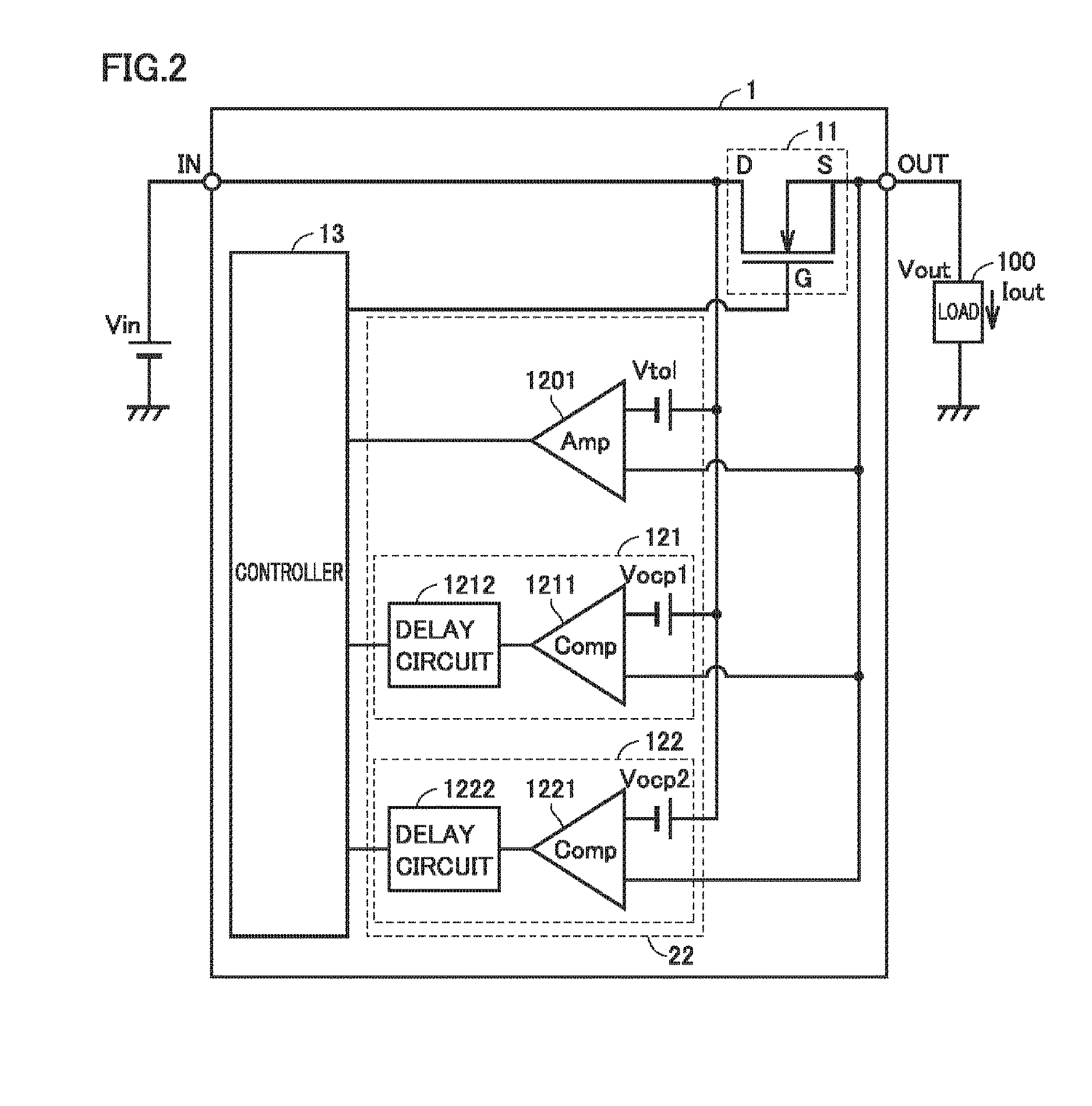Overcurrent Protective Device, Electronic Apparatus, Integrated Circuit, and Signal Transmission Circuit
a technology of overcurrent protection and protective device, which is applied in the direction of emergency protective arrangement for limiting excess voltage/current, electronic switching, and pulse technique, etc. it can solve the problems of insufficient maintenance, inability to perform timely overcurrent protection operation, and inability to substantially apply voltage to a control circuit. , to achieve the effect of suppressing an increase in the circuit scale of the control circuit, protecting the electronic apparatus, and reducing the substantially applied voltage to the control circui
- Summary
- Abstract
- Description
- Claims
- Application Information
AI Technical Summary
Benefits of technology
Problems solved by technology
Method used
Image
Examples
first embodiment
in Exemplary Variation
[0104]In the first embodiment, a case where detector 22 includes two detection circuits is illustrated. The number of the detection circuits which detector 22 includes is not limited to two. An exemplary variation of the first embodiment illustrates a case where detector 22 includes three or more detection circuits.
[0105]The exemplary variation of the first embodiment is different from the first embodiment in that the detector includes N detection circuits, where N>2. The remainder in configuration is similar to that of the first embodiment, and accordingly, it will not be described repeatedly.
[0106]FIG. 6 is a functional block diagram for illustrating a function of an overcurrent protective device 1A according to the exemplary variation of the first embodiment. As shown in FIG. 6, detector 22A includes a first detection circuit, a second detection circuit, . . . and an Nth detection circuit. Each detecting circuit includes a comparator and a delay circuit in a...
second embodiment
[0114]In the first embodiment a configuration is described in which once controller 13 has turned off FET 11, thereafter controller 13 does not return FET 11 to an electrical conduction state automatically. In the second embodiment a case will be described in which after controller 13 turns off FET 11 once a prescribed period of time elapses controller 13 returns FET 11 to the electrical conduction state.
[0115]The second embodiment is different from the first embodiment in that after controller 13 turns off FET 11 once a prescribed period of time elapses controller 13 returns FET 11 to the electrical conduction state. The remainder in configuration is similar to that of the first embodiment, and accordingly, it will not be described repeatedly.
[0116]FIG. 10 is a time chart of current Tout in the second embodiment. As shown in FIG. 10, current Tout between time t11 and time t12 exceeds first threshold value Iocp1. The period of time from time t11 to time t12 reaches first delay time ...
third embodiment
[0120]In the first embodiment a configuration is described in which detector 22 includes a plurality of detection circuits with different delay times to implement a delay time corresponding to a magnitude of current Tout. The method of implementing a delay time depending on a magnitude of current Tout is not limited to the method using the plurality of detection circuits with different delay times. In a third embodiment a case will be described in which a delay time is dynamically varied depending on current Tout.
[0121]The third embodiment is different from the first embodiment in that an overcurrent protective device according to the third embodiment includes an adjustment unit which varies a delay time dynamically depending on current Tout. The remainder is similar to that of the first embodiment, and accordingly, it will not be described repeatedly. Note that while FIG. 11 shows only the first detection circuit for the sake of illustration, the detector may include a plurality of...
PUM
 Login to View More
Login to View More Abstract
Description
Claims
Application Information
 Login to View More
Login to View More - R&D
- Intellectual Property
- Life Sciences
- Materials
- Tech Scout
- Unparalleled Data Quality
- Higher Quality Content
- 60% Fewer Hallucinations
Browse by: Latest US Patents, China's latest patents, Technical Efficacy Thesaurus, Application Domain, Technology Topic, Popular Technical Reports.
© 2025 PatSnap. All rights reserved.Legal|Privacy policy|Modern Slavery Act Transparency Statement|Sitemap|About US| Contact US: help@patsnap.com



